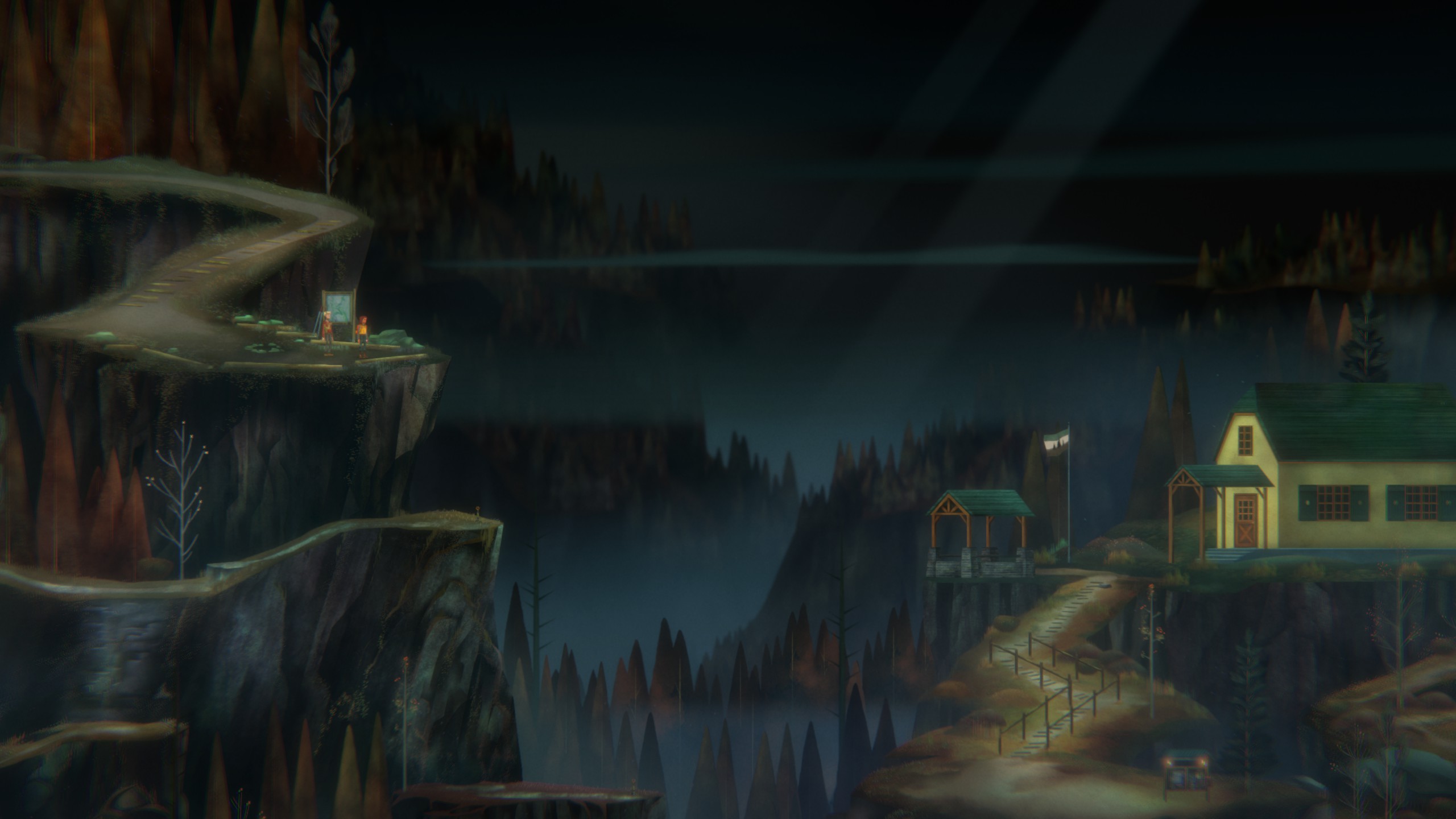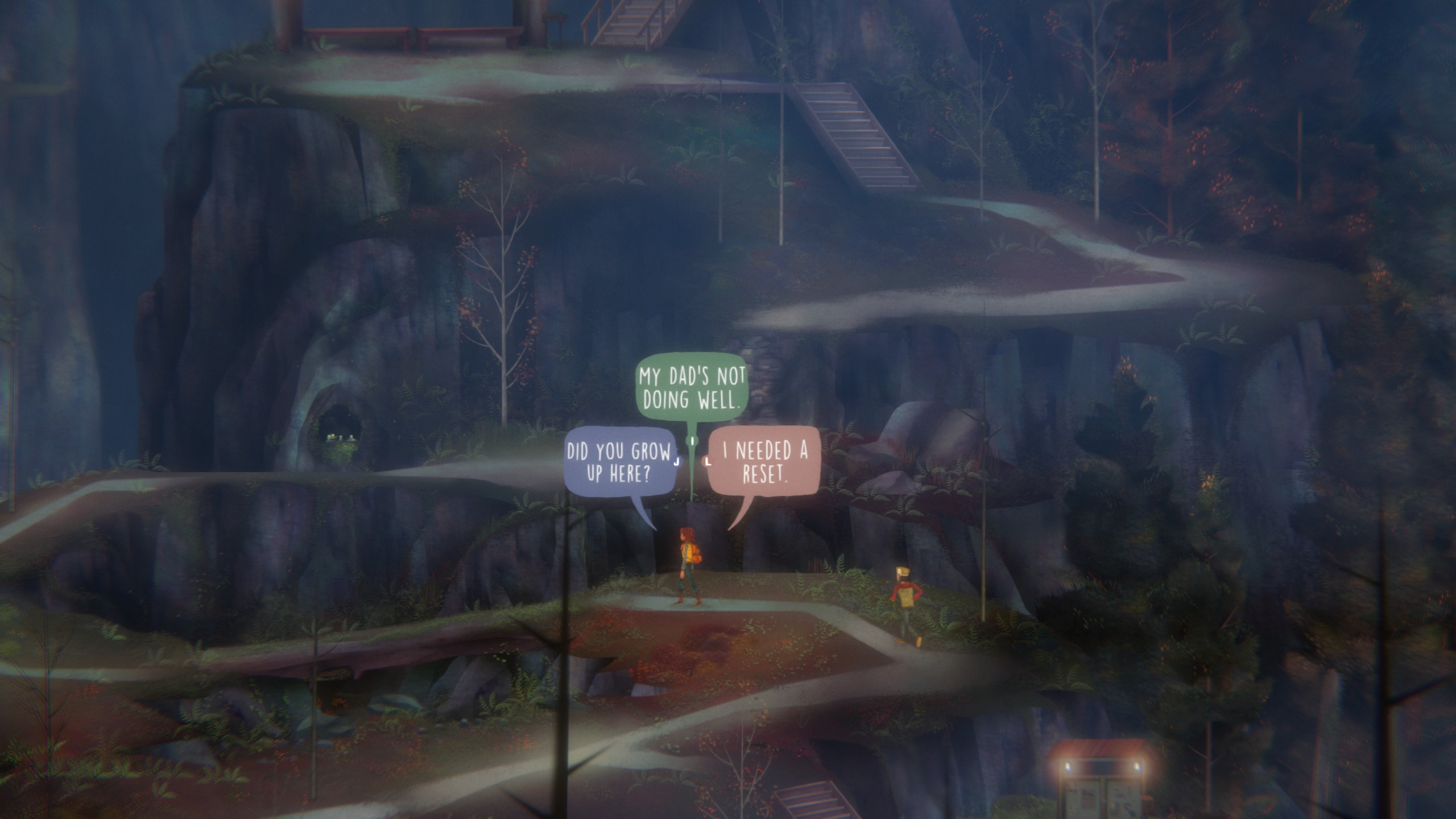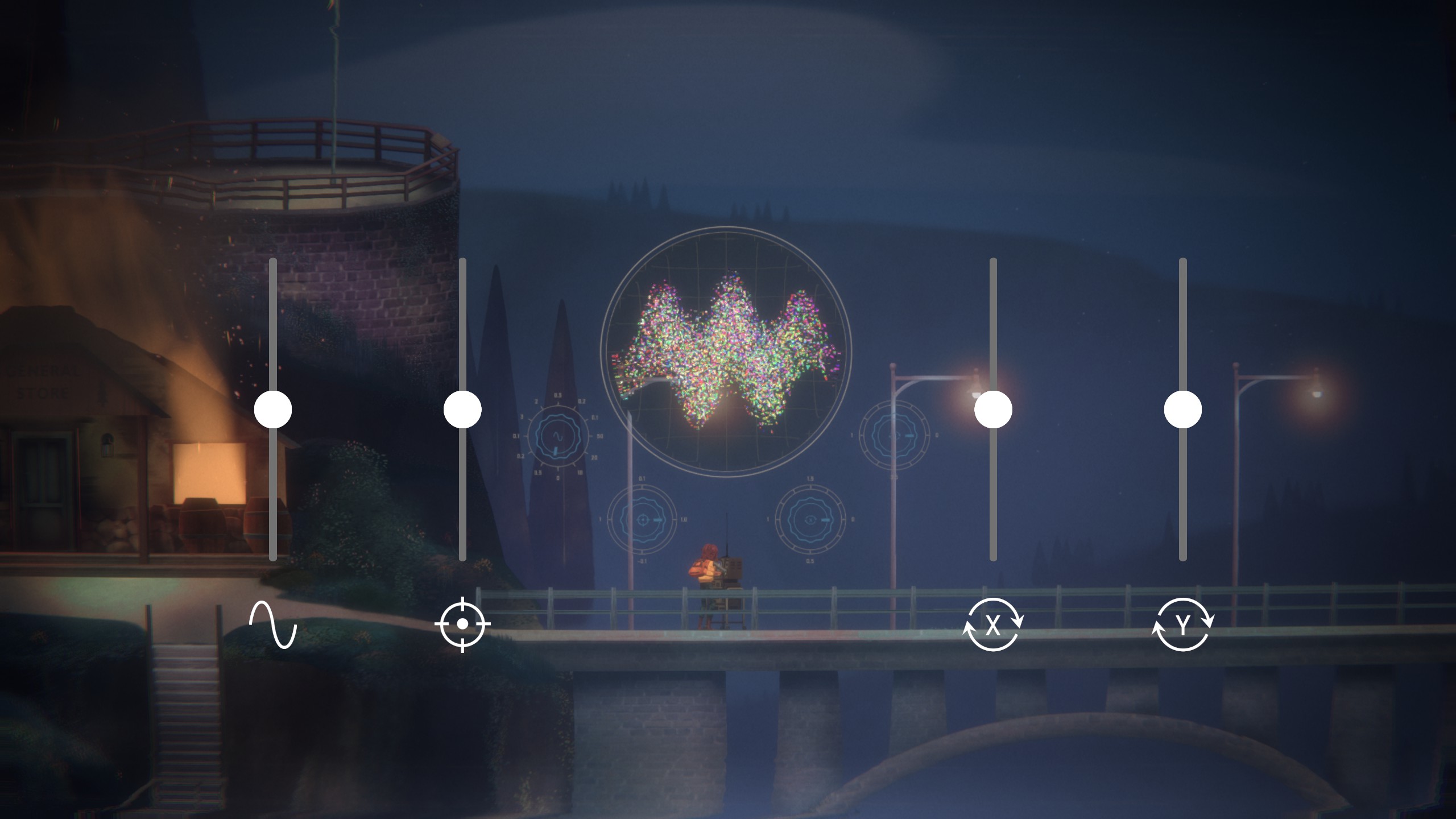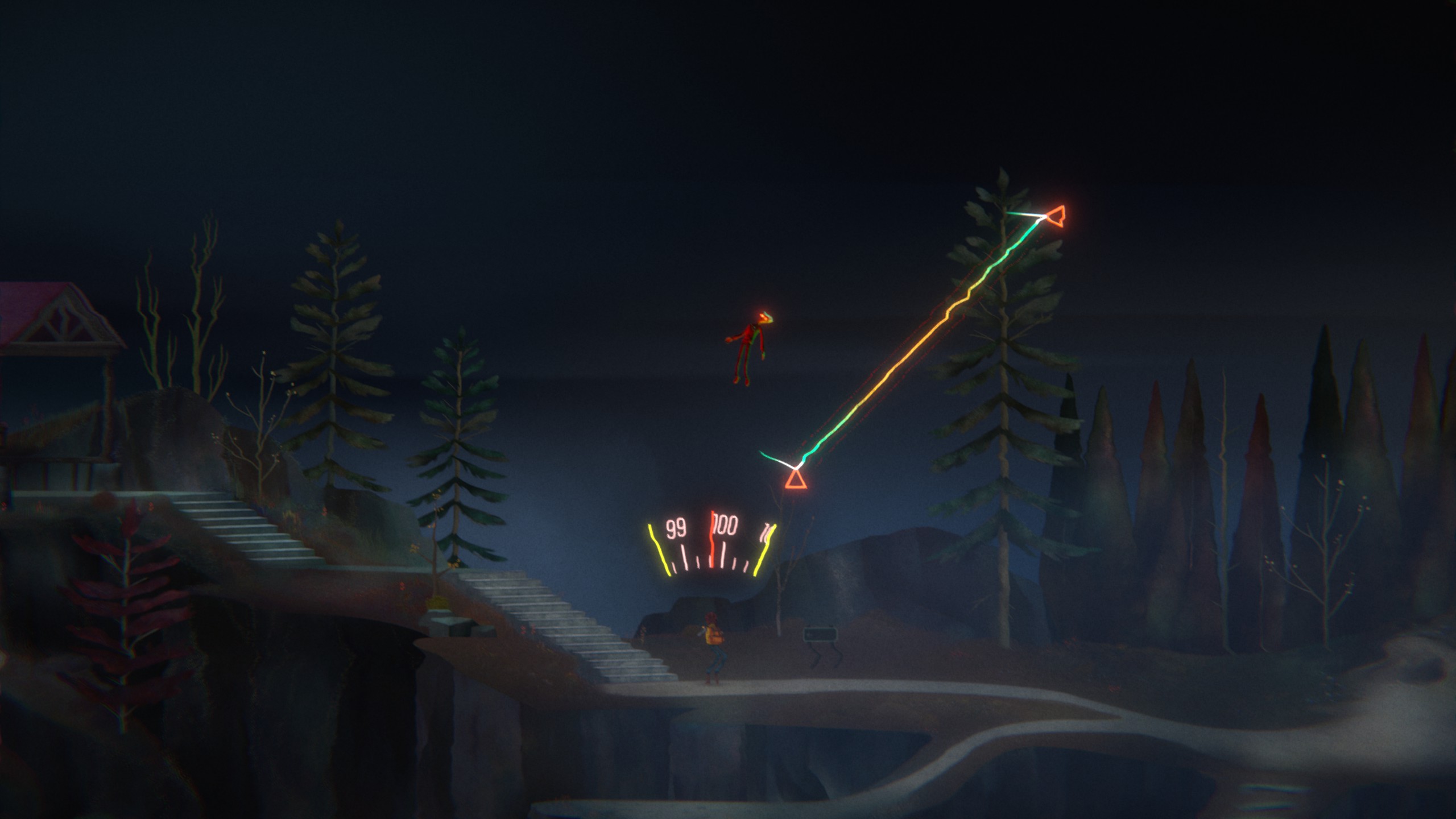Our Verdict
Oxenfree 2 is a more mature second run at the walk-and-talk formula.
PC Gamer's got your back
What is it? The kind of horror game that's not really scary, perfect for people who don't like horror, but do like going to Halloween parties.
Expect to pay: $20/£19
Release date: July 12
Developer: Night School Studio
Publisher: Netflix
Reviewed on: Windows 10, Ryzen 9 5900X, 32GB RAM, RTX 3080
Multiplayer? No
Link: Official site
When I really care about a game's characters I'll stop walking when they launch into spontaneous character-building conversations, because I'm afraid I might cross some invisible line that triggers more plot-critical dialogue to override it. What if I never hear the end of that story Garrus was telling Liara? It's unthinkable. Though I didn't dislike the talkative teenagers stranded on a spooky island in the original Oxenfree back in 2016, I never stopped walking to listen to them chat.
Partly that was because they'd return to important topics after being interrupted, with seamless "like I was saying" asides. Mostly it was because they said so much about so little I never felt at risk of not hearing something I was going to care about. If the trains run every five minutes, you're not bothered about missing one.
Oxenfree 2: Lost Signals is about adults, and that changes things. It's still a game of criss-crossing a haunted 2.5-dimensional slice of the Pacific Northwest (by clicking where you want to go or holding down the movement keys, it's not a platformer) while regularly tuning your radio to Eerie Dead People Talk Shit 102.1FM. There's something strange going on in the town of Camena, you see, and you've been hired to investigate anomalous radio signals by placing transmitters at certain locations in the nearby countryside.
It's just that this time the characters being messed with by what might be ghosts or time travelers—or might be both, depending how the wavelength collapses—are less worried about whether a girl thinks they're cool. (Though one of them is equally amused by the comms tower being named after someone called Richard Harden.) One advantage of Oxenfree 2 dealing with adults is that after it comes out the internet won't be full of middle-aged people banging on about whether or not it's an accurate representation of how teens "really" talk. The other advantage is that its characters are less likely to interrupt each other.
Talking simulator
The dialogue system was Oxenfree's most notable feature, simulating the way kids shout over each other in movies like The Goonies. No one stopped gabbing for you to consider which of your three responses to choose, and you never knew whether player-character Alex would wait until her friend finished what they were saying, or immediately cut them off to say her own thing. Combined with the way responses faded quickly if you didn't pick one in time, talking became a minefield of stressful decisions.
Which is exactly how it feels when you're a teenager. Even if I didn't end up caring about the individuals in Oxenfree as much as I did any given alien in Mass Effect, I ended up invested in my own awkward attempts to impress them.
In Oxenfree 2, the fully adult if not always that mature protagonist Riley has longer to consider her options. She interrupts people less often too. Oxenfree 2 lets you engage in Sorkin-esque walk-and-talks even when you're alone by giving you a walkie-talkie, and you have to wait for people to say "over" before you have your turn because that's how they work.
Keep up to date with the most important stories and the best deals, as picked by the PC Gamer team.
The walkie-talkie's an ingenious way of letting you fill quiet gaps. If you need to hear a friendly voice while climbing a cliff (something else that works better now, with Riley less likely to re-mount a wall or ladder when you click to walk away from it than Alex was), you whip the walkie-talkie out and check in with one of the other people dealing with the area's latest set of mysterious anomalies. I mostly spoke to a park ranger, a sailor, and my environmental researcher colleague, who all had their own storylines and added to a sense there was a whole world of paranormal phenomena going on and we could all help each other deal with our little bit of it.
I did miss out on befriending a radio DJ, probably because I didn't listen to her show at the right time, however. So yeah, it's still possible to miss things. Like the first game, I recommend turning on subtitles so you don't lose track of what people are saying when spooky static starts intruding or voices fade over a loading screen. At one point I stopped walking at the edge of a screen rather than enter a cave because I didn't want to miss out on some dialogue, and a helpful note appeared to tell me the conversation would continue. Later I confidently crossed a screen divide while the sailor talked about inexplicable nautical weirdness, only to be interrupted by a ringing payphone and never find out what he was going to say. The system's still not perfect, but it's certainly better.
The Talking Dead
Oxenfree and its sequel are important because they're the kind of horror games that fill a significant gap, in that they're not really horror games at all. They've got spooky stuff in them, but in a "may contain traces of nuts" kind of way that means you can safely recommend them to people who say they don't like horror games, but actually just don't like gore and feeling afraid to be alive.
Though I love horror and replay Silent Hill 2 for shits and giggles, I appreciate this middle zone, where it's more about feeling low-key off-kilter than it is about experiencing body horror or cosmic dread. It's a place where games are more likely to be surprising. When Oxenfree 2 really goes for it, when it starts upending your expectations, it gets creepy as hell. The way characters get thrown around like broken dolls is weirdly upsetting to see—something about those tall, thin figures being splayed limbs akimbo is just wrong—and every time I adjust the dial and tune into 93FM, All Ghosts Predicting Your Future All the Time, I get a genuine chill.
Oxenfree 2 is a more mature second run at the walk-and-talk formula.

Jody's first computer was a Commodore 64, so he remembers having to use a code wheel to play Pool of Radiance. A former music journalist who interviewed everyone from Giorgio Moroder to Trent Reznor, Jody also co-hosted Australia's first radio show about videogames, Zed Games. He's written for Rock Paper Shotgun, The Big Issue, GamesRadar, Zam, Glixel, Five Out of Ten Magazine, and Playboy.com, whose cheques with the bunny logo made for fun conversations at the bank. Jody's first article for PC Gamer was about the audio of Alien Isolation, published in 2015, and since then he's written about why Silent Hill belongs on PC, why Recettear: An Item Shop's Tale is the best fantasy shopkeeper tycoon game, and how weird Lost Ark can get. Jody edited PC Gamer Indie from 2017 to 2018, and he eventually lived up to his promise to play every Warhammer videogame.





